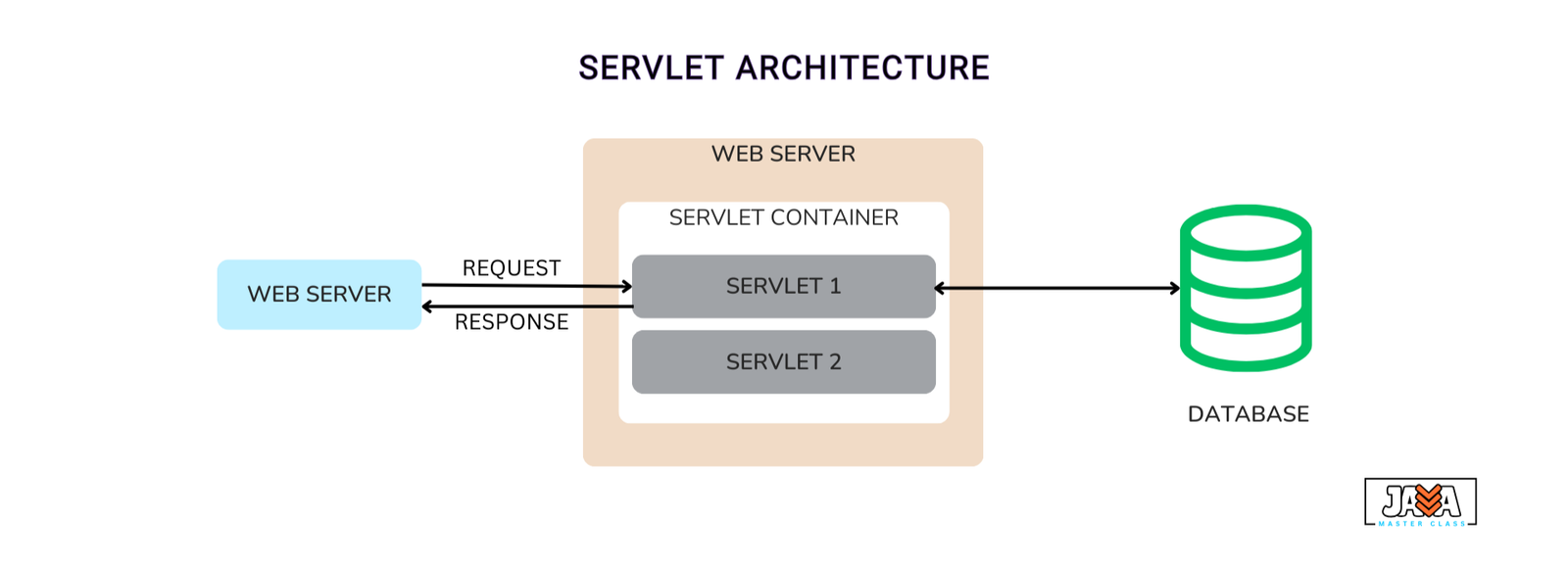A Servlet is a Java-based server-side technology used to create dynamic web applications. It acts as an intermediary between the client (usually a browser) and a web server, processing requests, performing business logic, and sending back the appropriate response. Servlets provide a platform-independent way to handle HTTP requests and generate dynamic content like HTML, XML, or JSON.
Importance of Servlets
Servlets are essential in building scalable and efficient web applications. They provide:
- Server-side processing: Unlike static web pages, which are directly served from the server, servlets handle dynamic content generation, such as processing user input or querying a database.
- Efficient resource management: Web servers can handle multiple requests simultaneously using a single servlet instance, which makes servlets highly efficient in terms of resource management.
- Extensibility: We can extend servlet functionality to suit the needs of our application by overriding its lifecycle methods and creating custom servlets for various purposes.
Servlet Architecture

A servlet operates in a Servlet Container, which is part of a web server or application server (like Tomcat, Jetty, or JBoss). The servlet container is responsible for managing the lifecycle of servlets, routing requests, and returning responses. When a client (typically a browser) sends an HTTP request to a server, the servlet container performs the following tasks:
- Request Routing: It identifies the appropriate servlet based on the URL pattern defined in the deployment descriptor (web.xml) or annotations.
- Servlet Initialization: If the servlet is being invoked for the first time, the servlet container loads and initializes the servlet by calling its
init()method. - Request Handling: The servlet processes the request and performs the necessary logic (e.g., accessing a database, interacting with other services, etc.) via the
service()method. - Response Generation: Finally, the servlet generates a response and sends it back to the client. This can be done via
doGet(),doPost(),doPut(), etc., depending on the HTTP method used by the client.
Components of Servlets
- Servlet API: Servlets are built using the Servlet API, which provides several essential classes and interfaces:
Servlet: The base interface that defines methods for initialization, request handling, and destruction.HttpServlet: A subclass ofGenericServletdesigned specifically for handling HTTP requests. It provides methods likedoGet()anddoPost()for GET and POST requests, respectively.ServletRequestandServletResponse: These interfaces represent the incoming request and outgoing response, respectively, allowing servlets to read client data and send back a response.
- Deployment Descriptor (web.xml): This is an XML file that describes the servlets and how they are mapped to URL patterns. It also contains other configuration details, such as servlet initialization parameters and security settings.
- Servlet Lifecycle: The lifecycle of a servlet is managed by the servlet container, and it consists of the following stages:
- Loading and Initialization: When the server starts or the servlet is first requested, the container loads the servlet and calls its
init()method. This is where resources can be initialized. - Request Handling: After initialization, the servlet handles incoming requests by processing them in the
service()method. This method delegates the request to specific handlers likedoGet()for GET requests ordoPost()for POST requests. - Destruction: Once the servlet is no longer needed (either when the server shuts down or the servlet is unloaded), the servlet container calls its
destroy()method to clean up resources.
- Loading and Initialization: When the server starts or the servlet is first requested, the container loads the servlet and calls its
- HTTP Methods: Servlets interact with client requests using various HTTP methods:
-
- GET: Used to request data from the server (e.g., retrieving a webpage or a resource). The
doGet()method handles these requests. - POST: Used to send data to the server (e.g., submitting a form). The
doPost()method handles these requests. - PUT, DELETE, HEAD, OPTIONS: Other HTTP methods that can be handled by servlets for different use cases.
- GET: Used to request data from the server (e.g., retrieving a webpage or a resource). The
Servlet Example
In this example, when a client sends a GET request to the servlet, the doGet() method processes it and sends back a simple HTML page displaying “Hello, World!”
|
1 2 3 4 5 6 7 8 9 10 11 12 13 14 15 16 17 18 19 |
import java.io.*; import javax.servlet.*; import javax.servlet.http.*; public class HelloServlet extends HttpServlet { protected void doGet(HttpServletRequest request, HttpServletResponse response) throws ServletException, IOException { // Set the content type of the response response.setContentType("text/html"); // Get the writer to send response data PrintWriter out = response.getWriter(); // Write the response to the client out.println("<html><body>"); out.println("<h1>Hello, World!</h1>"); out.println("</body></html>"); } } |
Applications of Servlets
- Scalability: Servlets can handle multiple requests simultaneously through threading, allowing for efficient use of server resources.
- Efficiency: Once a servlet is loaded into memory, it can handle multiple requests without the need to reload, providing faster response times.
- Integration with Java: Since servlets are Java-based, they integrate well with other Java technologies such as JDBC (for database connectivity), JavaBeans (for business logic), and Enterprise JavaBeans (EJBs).
- Security: Servlets can be integrated with web security mechanisms, such as authentication, authorization, and SSL encryption, to ensure secure data transfer.
